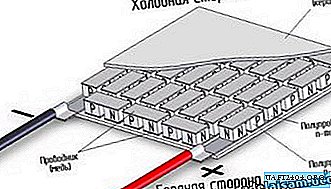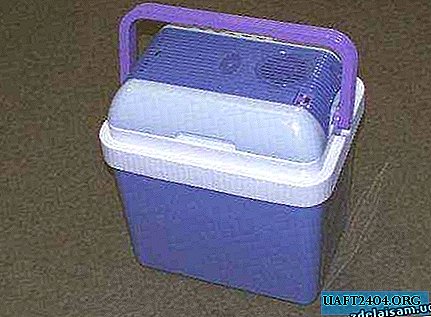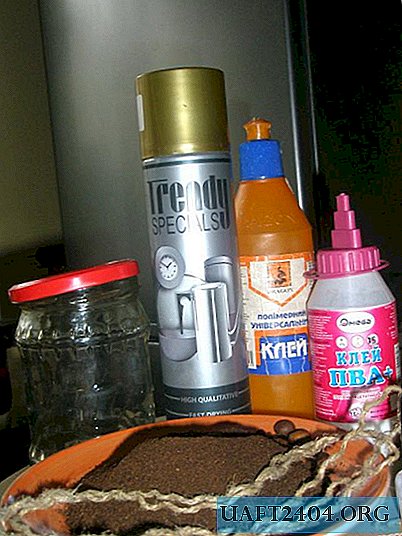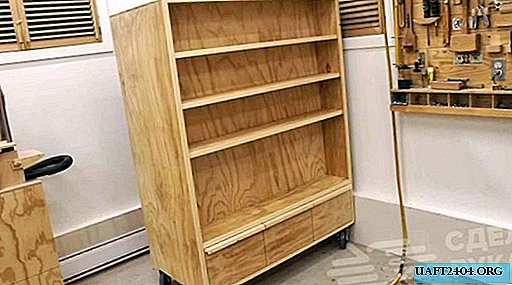Share
Pin
Tweet
Send
Share
Send
A little bit of theory.
Single element thermoelectric module (TEM) is a thermocouple consisting of two dissimilar elements with p- and n-type conductivity. Elements are interconnected using a patch plate made of copper. Semiconductors based on bismuth, tellurium, antimony and selenium are traditionally used as the material of elements.

Thermoelectric module (Peltier element) represents a set of thermocouples electrically connected, as a rule, in series. In a standard thermoelectric module, thermocouples are placed between two flat ceramic plates based on aluminum oxide or nitride. The number of thermocouples can vary over a wide range - from units to hundreds of pairs, which allows you to create a TEM of almost any refrigerating capacity - from tenths to hundreds of watts.
When a constant electric current passes through the thermoelectric module, a temperature difference forms between its sides - one side (cold) is cooled and the other (hot) is heated. If the hot side of the TEM provides efficient heat removal, for example, using a radiator, then on the cold side you can get a temperature that will be tens of degrees lower than the ambient temperature. The degree of cooling will be proportional to the magnitude of the current. When changing the polarity of the current, the hot and cold sides change places.
Practice.
Pelt elements are widely used in cooling systems. But not many people know about their other property - to generate energy. This laboratory work is devoted to the study of these possibilities.
50 * 50 mm element, installed between two aluminum bars. Previously, their surfaces are ground and greased with CBT paste. In one of the bars, through holes were drilled through which a copper tube was passed for water cooling. Here's what happened:

We connect water to the cooler to one side Peltier element, and put the other on the burner. We connect a 10W 6 volt light bulb to the output of the element. The result - our generator is working!

Experience proves that the Peltier element generates electricity well. The lamp burns quite brightly, the voltage is about 4.5 volts.
Heating up to 160 degrees was not optimal, at 120 degrees the result was the worst by only 10%.
The coolant temperature at the outlet is ten degrees, at the entrance one degree less. Judging by such results, water is not so necessary for cooling ...
With help Peltier elements You can get electricity on an expedition, on a camping trip, on a hunting winter hut, in a word, anywhere where you may need it. Naturally, in the presence of firewood or a bright sun, well, you must be smart.
Using a thermoelectric module.
Such a thermoelectric generator is well remembered by those who remember Soviet state farms and collective farms. It is said that during the war the Germans could not understand how partisans can broadcast radio programs from the besieged forest for a long time.
Yes, as they say - if our scientists were paid money, then they would have invented the iphone back in '85! :-)

Thermoelectric refrigerator

Thermoelectric refrigerator (option 2)

Thermoelectric refrigerator (option 3)

Car cooler for can drinks

Drinking water cooler

Thermoelectric air conditioner for KAMAZ cab

Water is poured into such a “bucket”, put on fire, and please recharge your mobile phone. The whole secret is in the bottom, Peltier is “buried” there

Let’s learn more about this design.
Currently, there is growing interest in the use of thermoelectric generator modules in household appliances. First of all, this concerns the possibility of supplying low-power consumers of electricity - radios, cell and satellite phones, laptop computers, automation devices, etc. from existing heat sources. A thermoelectric generator, in which there are no rotating, rubbing, or any other wearing parts, allows you to directly receive electricity from any heat source: exhaust gases from internal combustion engines, hot water from geothermal sources, "waste" heat from a thermal power plant, etc. Guided by the experience gained in creating industrial thermoelectric generators (TEGs) of various capacities - from a few watts to several kilowatts, IPF KRIOTERM began mass production of household TEGs with a rated power of 8 watts. Structurally, the generator is made in the form of an aluminum bucket with an internal volume of about 1 liter in the bottom of which the generator modules manufactured by IPF Krioterm are installed.


The temperature difference required for the operation of the generator is achieved when the bucket is heated, for example, with a bonfire flame. Water heated inside the bucket can be used for cooking or other purposes. This generator is primarily intended for use in remote, inaccessible places for recharging batteries of individual means of communication and navigation, lighting, etc. It is indispensable for hunters, tourists, sailors, employees of rescue and special services, forced to stay away from sources of central energy for a long time.
The advantage of the generator is its low weight and volume, high specific generated power, functionality and high reliability. The design of the generator eliminates the possibility of overheating when used correctly. As an additional option to the generator, a step-by-step voltage stabilizer with ranges of 3 V - 6 V - 9V-12V and adapters for chargers is offered.

HOUSEHOLD THERMOELECTRIC GENERATOR 1TG-8
Data sheet
Weight without liquid, kg, no more than 0.55
Overall dimensions, mm
with a handle
without a handle 250x130x110? 123, h = 100
Internal volume, dm3 1,0
Rated generated power, W, not less than 8.0
Output voltage, V 3.0? 12.0
Current, mA 660? 2660
Here is another use case.
The generator consists of such small thermoelectric capacitors.

Already now, thermoelectric generators (TEG), thanks to the latest materials, are capable of generating electricity up to 1000 watts.

The heat generator will especially please fans of dynamic driving: after all, the higher the engine speed, the more electricity is generated, which in the future can be used in hybrid power plants, for example, for even better accelerating dynamics.

Almost two-thirds of the fuel energy in modern ICE "flies" into the atmosphere along with heat. Therefore, BMW engineers, together with specialists from the US aerospace agency NASA, are actively working on technologies for converting the thermal energy of exhaust gases into electrical energy. Such installations have another positive effect: additional heating of an unheated motor. So far, TEG is "wrapping up" a section of the exhaust pipe, but in the future it is planned to integrate this system into the catalyst, thereby using its thermal regime. For a larger-scale implementation of this technology in a car, you will have to upgrade the bottom, expanding the central tunnel in some places. It is expected that such a system will very soon be able to give 5 percent fuel savings, increasing the efficiency of the internal combustion engine.

Here it is such a Peltier Element or thermoelectric module!
Share
Pin
Tweet
Send
Share
Send











